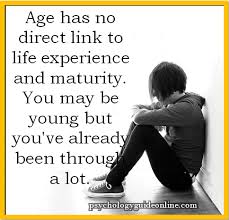I recently finished writing a series of blogs entitled, “Transforming Diabetes.” It was a culmination of work I have been doing over the last 5 years dealing specifically with the process I have used in managing and, intermittently. mastering diabetes. If you are interested in reading about my perspective and what I have discovered in my 34 years of experience then click on Transforming Diabetes under the Categories section of this blog site. Start with Post #1 and proceed from there. Diabetes is called a “chronic” dis-ease. Webster’s dictionary defines chronic as –
“1. lasting a long time or recurring often: said of a disease, and distinguished from ACUTE. 2. having had an ailment for some time (a chronic patient) 3. continuing indefinitely; perpetual; constant (a chronic worry) 4. by habit, custom, etc; habitual; inveterate (a chronic complainer) – n. a chronic patient —chronically adv. —chronicity n.
SYN. – chronic suggests long duration or frequent recurrence and is used especially of diseases or habits that resist all efforts to eradicate them (chronic sinusitis); inveterate implies firm establishment as a result of continued indulgence over a long period of time (an inveterate liar); confirmed suggests fixedness in some condition or practice, often from a deep-seated aversion to change (a confirmed bachelor); hardened implies fixed tendencies and a callous indifference to emotional or moral considerations (a hardened criminal)”
At age 14 I was “given” this serious, complicated, dangerous and, often times, insidious, physical condition to address. I guess it is called chronic because it is here to stay. There is no cure. Prior to 1921 any human being who “caught” this disease died in a matter of weeks. And it wasn’t an easy way to go. It is death by starvation. Today Type 1 diabetics can live longer. Some even make it past the current average expected life span of a human being. We have injectable insulin and we have better tools to deliver it and to test our blood sugar levels. The real chronic characteristic of the condition now is the constant monitoring of insulin dosage, food intake and blood sugar levels. It is a 24/7 job.
In the past five years I have been working on “ways” to assist others in confronting, understanding, integrating, mastering and transforming that in their life that they have become aware of as a chronic condition. My intention in my service is to guide and support them in discovering, experiencing, and practicing the “work” they must engage in and celebrating the outcomes they realize. My experience with a dark and challenging physical, mental, emotional and spiritual chronic condition has shown me a path that has produced movement, softening, change and a “light at the end of the tunnel.”
Is life itself chronic? It can be.
The Buddha, in his teachings, said;
Better a single day of life
seeing the reality of arising and passing away
than a hundred years of existence
remaining blind to it.
At the core of the Buddha’s teaching is the path to liberation from suffering by becoming conscious that we are, and for that matter everything in the universe, is constantly changing and impermanent. “What arises is bound to pass away.” And at the subtlest level the tiniest particles of the universe which make up everything are “arising and passing away at great rapidity.” Quantum Physics is telling us that these tiniest particles are the most real thing there is. In reality everything is a big vibration.








